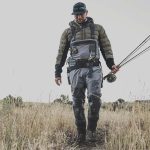Vail Resorts said it expects resort fiscal 2022 reported EBITDA to be at or around the top of its guidance range issued on March 14, 2022 given the ski season trends from the beginning of the ski season through April 17, 2022.
The metrics include:
- Season-to-date through April 17, 2022, total skier visits were up 12.5 percent compared to the prior year season-to-date period;
- Season-to-date total lift ticket revenue, including an allocated portion of season pass revenue for each applicable period, was up 19.4 percent compared to the prior year’s season-to-date period;
- Season-to-date ski school revenue was up 53.0 percent, and dining revenue was up 73.2 percent compared to the prior year’s season-to-date period; and
- Retail/rental revenue for North American resort and ski area store locations was up 39.0 percent compared to the prior year’s season-to-date period.
The reported ski season metrics are for its North American destination mountain resorts and regional ski areas and exclude the results of its recently acquired Seven Springs Resorts and its Australian ski areas in both periods. The reported ski season metrics include growth for season pass revenue based on estimated fiscal 2022 North American season pass revenue compared to fiscal 2021 North American season pass revenue.
Commenting on the ski season to date, Kirsten Lynch, CEO, said, “We are pleased with our overall results as the 2021/22 North American ski season concludes, which, as expected, are significantly outperforming results from the 2020/21 season. The prior year was significantly impacted by COVID-19 and related limitations and restrictions, which eased for most resorts in March and April of last year, resulting in stronger visitation and revenue relative to the earlier parts of last season. This year, challenging early-season conditions persisted through the holiday period, but our results were strong from January through the remainder of the season. Our strong season pass sales heading into the season, which is the foundation of our advance commitment strategy, resulted in particularly strong destination visitation and were further supported by lift ticket sales at our Colorado and Utah resorts that exceeded our expectations. Our recent results at Whistler Blackcomb were stronger than expected due to Canada’s easing of travel restrictions. Recent performance at our eastern U.S. ski areas was in-line with our expectations, while our Tahoe resorts were impacted by challenging spring conditions, resulting in performance below our expectations. Our ancillary businesses continued to be capacity constrained by staffing, and in the case of dining, by operational restrictions associated with COVID-19. Our results throughout the 2021/2022 North American ski season highlight both the stability resulting from the advance commitment from season pass products in a season with challenging early season conditions, staffing challenges and COVID-19 impacts and our strong execution following the holiday period through the end of the season.”
Regarding the outlook for fiscal 2022, Lynch said, “Based on the strong finish to the season, particularly driven by lift ticket sales in Colorado, Utah and Whistler Blackcomb, we now expect that our fiscal 2022 Resort Reported EBITDA will be at or around the top of our guidance range issued on March 14, 2022.”
Commenting on season pass sales, Lynch continued, “Last Thursday was the final day of our April sales deadline, and we continue to see guest enthusiasm for the value proposition of our advance commitment products. However, without any comparable April deadline in the spring of 2020 or 2021 due to COVID-19, we will defer any commentary on season pass sales until our third-quarter earnings release in June 2022, which follows our Memorial Day sales deadline.”
Vail Resorts’ subsidiaries currently operate 40 destination mountain resorts and regional ski areas, including Vail, Beaver Creek, Breckenridge, Keystone, and Crested Butte in Colorado; Park City in Utah; Heavenly, Northstar and Kirkwood in the Lake Tahoe area of California and Nevada; Whistler Blackcomb in BC, Canada; Perisher, Falls Creek and Hotham in Australia; Stowe, Mount Snow, Okemo in Vermont; Hunter Mountain in New York; Mount Sunapee, Attitash, Wildcat, and Crotched in New Hampshire; Stevens Pass in Washington; Seven Springs, Hidden Valley, Laurel Mountain, Liberty, Roundtop, Whitetail, Jack Frost, and Big Boulder in Pennsylvania; Alpine Valley, Boston Mills, Brandywine, and Mad River in Ohio; Hidden Valley and Snow Creek in Missouri; Wilmot in Wisconsin; Afton Alps in Minnesota; Mt. Brighton in Michigan; and Paoli Peaks in Indiana.















